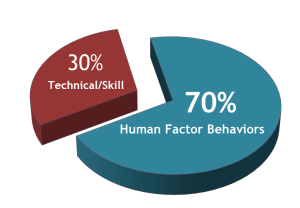
Unlocking the Potential of SelectRight™ Hiring Solutions
When “Dolly,” the cloned sheep, was unveiled to the world, it brought to light the topic of duplication. Properly used, cloning could give us more proven good things by replication – animals and food products, boasts the scientific community. Cloning humans? Unethical, many proclaim. And the debate begins.
Still, HR managers probably wouldn’t mind a skosh of cloning in schools. What if all their hires – from teachers to custodians – were as good as the top people in the district? Better student scores, cleaner schools, and a better learning environment. Levies passing? Almost guaranteed. A school administrator’s dream.
While cloning will not happen with humans (we hope!), one company in Gig Harbor, Washington, says, “Not so fast.” While not a proponent of having 10,000 Mr. Gorow “educational assistant of the year” look-alikes running around, the human resource company says there are ways to find people with the same characteristics and make-up to be top performers. The company says it is helping to identify those people for dozens of school districts throughout the country. The company offers screening tests for the positions of teaching assistant, school secretary, custodian, and school bus driver (with tests for teachers now under development).
The Key to Identifying Top Performers
According to Dr. Richard Scheig, president of Scheig Solutions, they offer the ability to look at the person via a test to see if they have the behavior required to succeed in the given job task. “It’s something that can’t be determined through a work history check, nor a personal interview,” Dr. Scheig says. “It takes an objective assessment that measures the person for the job.”
Mirror Image of Star Performers
When personnel managers and principals hire an applicant, they hope the new employee will be as productive as the school’s ‘star’ employees. “People who score well on our test mirror the same qualities of the top performers in that job position,” asserts Dr. Scheig. “And because each assessment series is job-specific and behaviorally based, its validity is extremely high. In other words, we’ve removed much of the guesswork that plagues hiring.”
The Science Behind the Assessments
The assessments were developed by asking successful custodians, secretaries, teaching assistants, and school bus drivers at several highly-rated schools to describe their job and explain how their response to different situations differs from that of their less productive peers. Applicant responses are compared to those of the proven performers.
The Three-Part Assessment
There are three sections to each assessment. The first measures the applicant’s interest and willingness to fulfill the duties of the job. “You’d be surprised at how often performance problems can be traced to an employee’s unwillingness to perform the job duties,” explains Dr. Scheig. “This part of the assessment helps the school district clearly identify their expectations.”
Section Two: A Forced Choice Checklist
Section Two is a forced choice checklist, where high-performance behaviors have been paired with those associated with low performance. While each response appears equally desirable, this section identifies applicants who describe themselves in the same terms as successful employees.
Section Three: Critical Incidents
The third section describes a series of critical incidents the applicant will typically encounter on the job. This section identifies applicants who demonstrate high-performance capabilities by their response to a particular situation.
The Time and Cost Saver in Hiring
Since the time spent administering each assessment is usually much less than that spent doing initial screening or conducting personal interviews, Scheig recommends that it be given during the application phase of the hiring process. “By doing this, school district personnel managers will spend their time interviewing only those applicants who have demonstrated high-performance behaviors, thus saving their district time and money,” says Dr. Scheig.
Mitigating Risk and Costs
“But more important,” Dr. Scheig adds, “the assessments decrease the probability of hiring a marginal performer, sparing headaches and minimizing the risk of litigation. Often, if an employee needs to be dismissed, it takes a special meeting of the Board of Education to grant approval. All this can be very costly. Our goal with these cost-effective tests is to provide school district personnel managers and principals with a way to make good hiring decisions from the outset.”
Unique Custodian Test Development
Good custodians do a lot more than clean schools. They’re valuable employees who must relate well to students, staff, parents, and community members. They must be able to meet a schedule, work well with other staff members, communicate effectively, follow directions, and be adaptable to continuously changing environments. “Yet, when hired, most custodial candidates are evaluated based on their technical expertise alone,” says Dr. Scheig. “If you want to improve the quality of your custodial staff and their on-the-job productivity, you should focus on workplace behavior.”
A Tool for Streamlining the Hiring Process
Reviewing hundreds of applications and personal interviews requires a lot of time. It’s a “weeding out” process that is not an exact science; good and bad candidates can move onto the next level based on their background and interview ability. “The initial screening interview we had in place was not an indicator of anything,” recalls Shirley Sandoval, director of HR for the Clark County school district in Las Vegas. “We needed a way to streamline the hiring process. Before, we were shooting in the dark. Now we have a tool to help us identify those candidates with the best chance of success.”
Validating the Results
Scheig often encourages districts to “test drive” the test by assessing employees who perform at the top and low end of the chart. “We’ll peg them by their test score,” Dr. Scheig says. “Administrators often ask, ‘How did you know?’ But it’s not magic. It’s how we developed the test that makes it so accurate.”
A Cost-Effective Solution
Dave Bowser, supervisor of operations at the Neenah Joint School District in East Central Wisconsin, was up for the challenge and administered the test to one of his area’s top and one marginal performers. “The test scores came back, and the top performer scored in the top 70 percent of all custodians; the other custodian in the 25 percent level,” he said. “I also had others in our organization take the test, and each time, the test correlated with whether the person was cut out to be successful in the job of custodian.”
Identifying Outstanding Applicants Early
Since the time spent administering the assessment is usually much less than that spent conducting a personal interview, Scheig recommends that the assessment be given during the application phase of the hiring process. “By doing this, you will only spend your time interviewing those applicants who have demonstrated high-performance behaviors, thus saving your district time and money,” says Dr. Scheig. “Remember, this program is designed to help you identify and hire only outstanding applicants.”
About Scheig Solutions
Scheig Solutions develops job-specific pre-employment assessments, interview questions, and performance evaluations designed to identify applicants who are a good match for the job. They have programs specifically designed for motorcoach drivers, school bus drivers, and diesel technicians. They have been in business for over 30 years as recognized leading providers of behaviorally based hiring tools.
For more information, contact Chris Fisher at (800) 999-8582 or visit www.scheig.com.



